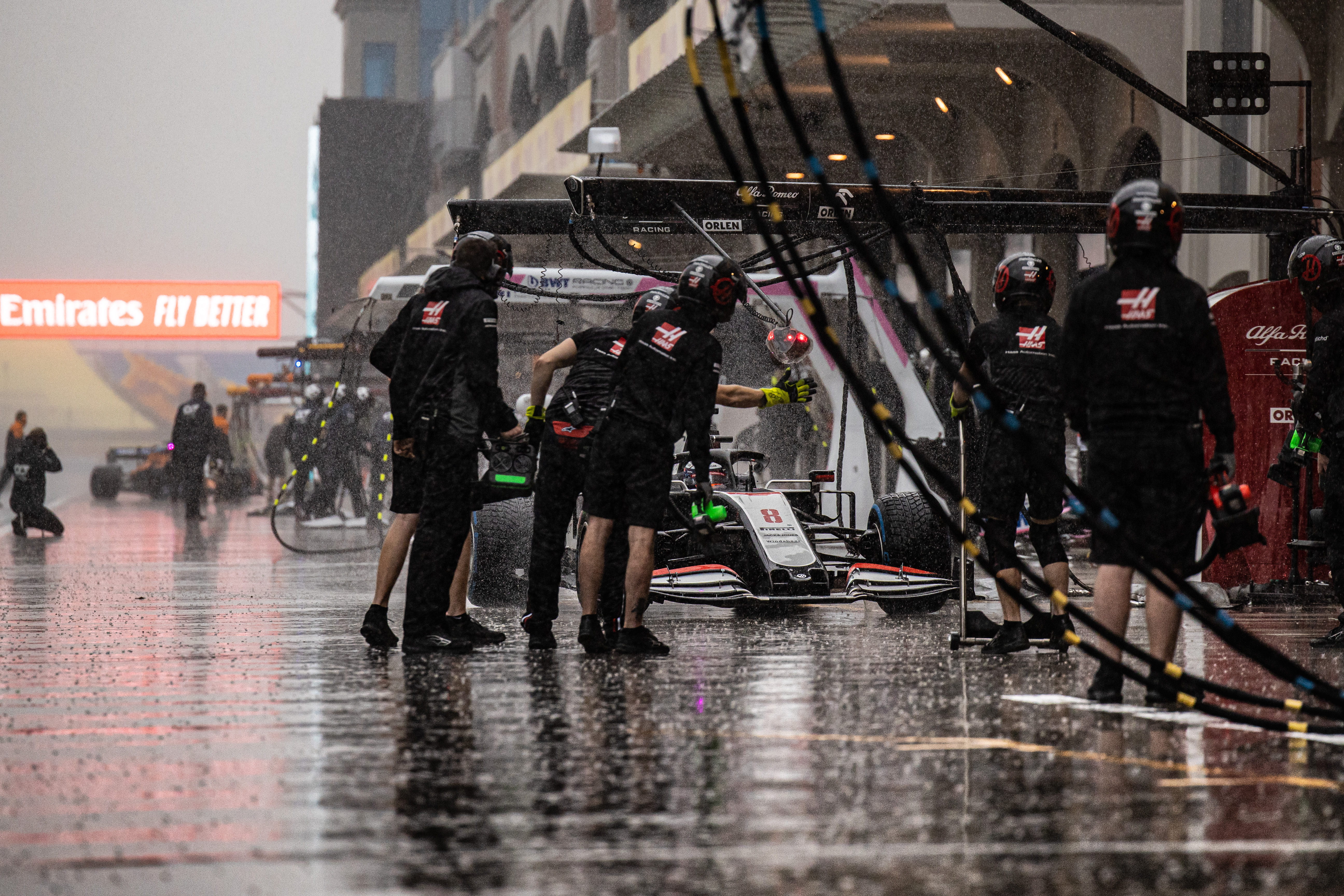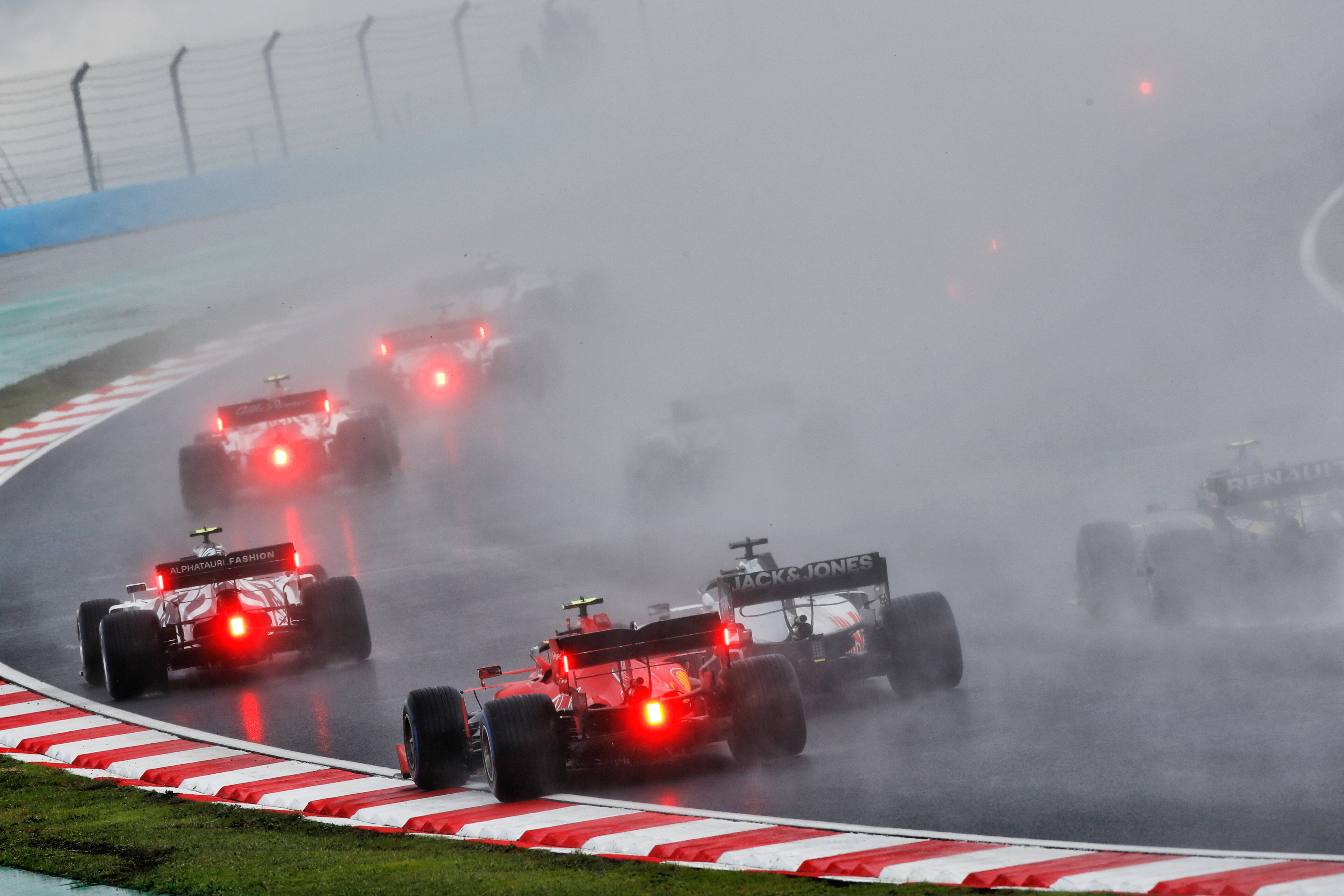Up Next

FIA Formula 1 race director Michael Masi insists he was “more than comfortable” allowing a part of Turkish Grand Prix qualifying to begin with a recovery vehicle in use on the assumption it would move to a safe position in time.
The decision to let Q2 at Istanbul start when the recovery of Nicholas Latifi’s Williams had not been completed was met with confusion and criticism from F1 drivers.
When the cars released from pitlane arrived at the fast Turn 8 left-hander on the outlap, double-waved yellows had to be deployed as the recovery vehicle was still in use and marshals were present in the run-off area.
It drew comparisons with the incident that left Jules Bianchi with fatal injuries after going off-track in the wet in Japan in 2014 and hitting a recovery vehicle, and has been labelled a “zero tolerance” mistake by Ferrari driver and Grand Prix Drivers Association director Sebastian Vettel.
On Saturday, Masi had said that it happened because he was informed by the clerk of the course that the recovery vehicle was on its way to the gap in the barrier and should be clear in time, and that process was unexpectedly delayed.
One major question is why starting the session when he did was so important if the recovery vehicle was going to be out of the way in a short amount of time. It has been widely argued that simply waiting that amount of time for the crane to move before starting Q2 was the better, safer decision that eliminated any risk.
Addressing the subject further on Sunday evening after the Turkish GP, Masi insisted he was happy working on the prediction of his fellow official rather than take the extra precaution.
“As I said yesterday, in the comment that was put out, it was quite close to the barrier opening, the crane was on its way,” Masi said.
“And we were given assurances that it would be well and truly clear.
“And looking at everything, I was more than comfortable with the local assurances on that basis.

“So as I said, the benefit of hindsight, you would do something different.
“But based on it all and the available information at the time, that was the call that we made.
“Obviously, it was a double yellow flag anyway, regardless, which is normal protocol, even when there aren’t cars on track.
“And further to that, that sector was extended even further. And it was an outlap.”
Masi assumed the race director’s role in place of the late Charlie Whiting at the start of the 2019 season. He is also the safety director.
There have been several questions raised over the safety of some decisions this season, including the restart procedure in the Tuscan Grand Prix and the process of drivers unlapping themselves behind the safety car in the Emilia Romagna Grand Prix when marshals were working on/at the side of the track.
When asked if that questioned his safety director role, Masi did not respond directly and instead, he reiterated the importance of safety to the FIA.
“From an FIA perspective, we review every incident that takes place, be it minor, major in between or otherwise, at any point in time during a session, outside of the session, and continually learn from everything that takes place,” he said.
“So, from that end, we’ll continue to learn, no different to a team learning about different elements over a weekend and in between. We are absolutely no different.
“And from our end safety is our number one priority, and you learn from everything, every time a car rolls out pitlane, every time you look at something different.”

The Race Says
Masi’s decision has been heavily criticised because it needlessly accepted the risk of the vehicle being delayed. However unlikely it was, it happened – which meant there was a needlessly dangerous situation with cars on track.
Istanbul’s surface was notoriously slippery all weekend and the track was wet, with drivers going off even when they were not pushing.
Yet instead of waiting an extra minute or so until the recovery vehicle was definitely out of harm’s way, it was considered acceptable to assume there wouldn’t be a problem.
There was a problem. It was foreseeable. It didn’t need hindsight to be avoided.
Vettel’s comments on Sunday evening highlighted how seriously the drivers have taken this mistake. Masi acknowledged a bad situation was created.
But it’s unimpressive that he did not admit it was an error to be “more than satisfied” with the clerk’s assumption when it retained an element of uncertainty. He should know that the correct course of action was the one completely removed any risk: wait until the crane was already gone.
He reiterated that safety is the FIA’s number one priority. But that action in qualifying was not as safe as it could have been.
So this is not a good enough response to the criticism that emerged based on his original comments, especially when Vettel called it a “zero tolerance mistake”.




